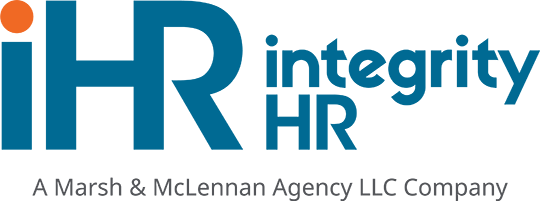A Comprehensive Guide for Business Leaders
Human resource strategic planning is a critical aspect of organizational development and success. It involves the systematic process of aligning the human resource function with the strategic objectives of an organization. In this article, we dive into the key areas of HR strategic planning, outlining steps for creating an effective plan, strategies for implementation, and the benefits derived from such planning.
Understanding Human Resource Strategic Planning
Human resource strategic planning is the process of identifying current and future human resource needs to achieve organizational goals. It is a proactive approach, focusing on long-term human resource requirements and the strategies to meet those needs. The purpose is to ensure that an organization has the right people, with the right skills, at the right time, and in the right place.
Key Areas:
- Workforce Planning: Involves analyzing current workforce, forecasting future needs, and
determining the actions needed to align workforce with the organizational goals. - Talent Management: Focuses on attracting, developing, retaining, and utilizing people with the
required skills and aptitude to meet current and future organizational needs. - Performance Management: Establishes performance standards and evaluates employee
performance to ensure alignment with organizational objectives. - Training and Development: Addresses the skill development and learning needs of employees
for their current and future roles. - Succession Planning: Prepares for future vacancies in key positions by identifying and
developing potential leaders within the organization. - Diversity, Equity, and Inclusion: Ensures a diverse workforce and creates an inclusive work
environment.
Steps to Creating an HR Strategic Plan
- Assessing Organizational Goals and Objectives:
a. Understanding Vision and Mission: Review the organization’s vision, mission, and long-
term strategic goals.
b. Alignment with Business Strategy: Ensure that HR strategies align with overall business
strategies. - Conducting a Current HR Capability Assessment:a. Skill Audits and Workforce Analysis: Assess current workforce capabilities, skills gaps,
and future requirements.
b. SWOT Analysis: Analyze the strengths, weaknesses, opportunities, and threats in the
current HR function. - Forecasting HR Requirements:
a. Future Workforce Needs: Predict future workforce needs based on organizational
growth, technology changes, and market trends.
b. Gap Analysis: Identify the gaps between the current HR capabilities and future needs. - Developing HR Strategies and Policies:
a. Strategic Initiatives: Develop strategies for recruitment, training, performance
management, and employee retention.
b. Policy Framework: Establish policies that support and reinforce the HR strategies. - Action Planning:
a. Specific Actions: Define specific actions, timelines, and responsibilities to implement the
HR strategies.
b. Budgeting and Resources Allocation: Allocate necessary resources and budget for the
implementation of the HR plan. - Monitoring and Evaluation:
a. Performance Metrics: Establish metrics to measure the effectiveness of HR initiatives.
b. Regular Reviews: Conduct regular reviews and adjust strategies as necessary.
Implementing the HR Strategic Plan
Communication and Engagement
- Stakeholder Engagement: Involve key stakeholders in the planning process.
- Communication Strategy: Develop a clear communication strategy to ensure understanding and buy-in from all levels of the organization.
Change Management
- Managing Resistance: Address resistance to change through effective communication and involvement.
- Training and Support: Provide training and support to employees and managers for new initiatives.
Technology and Data Analytics
- Leveraging HR Technology: Use HR technology for efficient implementation of HR processes and data analytics.
- Data-Driven Decisions: Make informed decisions based on data analysis and metrics.
Benefits of HR Strategic Planning
- Alignment with Organizational Goals: Ensures that the HR function is fully aligned with the strategic objectives of the organization.
- Improved Talent Management: Helps in attracting, developing, and retaining the right talent to meet current and future needs.
- Enhanced Organizational Performance: Leads to improved employee performance and productivity, contributing to overall organizational success.
- Proactive Workforce Management: Allows for proactive planning for future workforce needs, avoiding last-minute talent shortages.
- Increased Employee Engagement and Satisfaction: Employees feel valued and engaged when they see a clear link between their work and the organizational goals.
- Better Risk Management: Helps in identifying and managing HR-related risks, such as compliance issues and talent shortages.
- Cost Efficiency: Strategic planning helps in optimal resource allocation, leading to cost efficiencies in HR operations.
Conclusion
Human resource strategic planning is not just a function of the HR department; it is a vital component of an organization’s overall strategic plan. By aligning HR strategies with business objectives, organizations can ensure that they have the human capital needed to achieve their goals. This alignment leads to improved organizational performance, employee engagement, and operational efficiency.
Effective HR strategic planning goes beyond mere staffing and personnel management. It encompasses a broader vision of nurturing a dynamic, skilled, and motivated workforce that is capable of adapting to changing business environments and contributing to the company’s competitive advantage. This involves a continuous cycle of planning, implementing, evaluating, and revising strategies to respond to both internal and external changes.
In today’s fast-paced and complex business world, the ability to anticipate and prepare for future challenges in human resources can set a company apart. Organizations that invest time and resources in developing a robust human resource strategic plan are better equipped to handle the uncertainties of the market, technological advancements, and evolving workforce dynamics.
Ultimately, the success of a human resource strategic plan hinges on its alignment with the overall vision and mission of the organization, and its flexibility to adapt to ongoing changes. This strategic approach in managing human resources ensures not only the achievement of organizational objectives but also fosters a work culture that values growth, diversity, and innovation. As organizations continue to evolve, the role of HR as a strategic partner will become increasingly central in driving organizational success and sustainability.
A well-crafted human resource strategic plan is an indispensable tool for any organization aspiring to thrive in the modern business landscape. It provides a roadmap for HR excellence, aligns human capital with business goals, and paves the way for future growth and success.
Our certified HR Professionals have helped hundreds of clients create effective HR Strategic Plans. If you would like to speak to one of our professionals for a free consultation about strategic planning or any other HR related question, click here.











